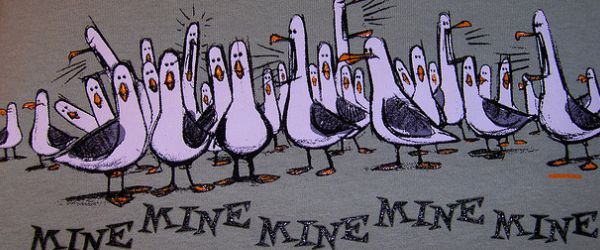Biologists have a long tradition of drawing specimens as a form of data collection before the invention of the camera. The ability to present information in the form of illustrations is an important but often understated skill in a scientist’s toolkit. Scientific illustrations in publications run the gamut from schematics, 3D models, cartoons, and even comics! While not every scientist will be the next Ernst Haeckel or Maria Merian, there are certainly benefits to creating an illustration that is scientifically accurate as well as pleasing to the eye. This article will introduce you to different ways to use scientific illustration to communicate your research.
Why Illustrate?
Firstly, illustrations are gateways to complex ideas. Just like how a picture speaks a thousand words, a good scientific illustration speaks paragraphs! An appealing illustration presents research much more concisely compared to literal description using words and sentences.
For example, why not present a newly discovered complex mechanism as a schematic or cartoon in a research article? In review articles, you can use illustrations such as cartoons to summarize the literature in pictorial form. An article that is accurately and beautifully illustrated is a pleasure to read. The easier it is for readers to quickly grasp an article, the more times it may be cited.
Also, as we have all heard before, science is not completed until it is communicated. For those inclined towards science communication and public outreach, illustrations such as cartoons and comics are powerful tools to reach out to everyone, not just scientists (think PhD Comics). Not everyone will understand the research presented in journal articles but most will appreciate the message behind a clever drawing!
Schematic, Cartoon, or Comic?
So how do scientists embark on illustrating scientific concepts? What is the most suitable illustration to use? A quick scan reveals that most illustrations in scientific literature are schematics and cartoons.
- Schematics are simple and easy to understand diagrams which represent elements in a system using abstract symbols. Common examples of these in biological publications are flow charts and metabolic pathways. Using simple symbols such as lines and arrows, metabolic pathways allow readers to visualize complicated networks between enzymes and substrates, which would otherwise be a challenge to describe in words. As flow charts convey information concisely without distraction from unnecessary clutter, they are most appropriate as concluding summaries of scientific findings. Schematics allow the reader to understand complicated scientific conclusions at a glance, without having to read the entire article. You don’t have to be an artist to design schematics. If you can draw stick figures, you can draw schematics!
- Cartoons are drawings which depict subjects in a semi-realistic style. You can create cartoons using simple shapes to represent biological processes in detail. Have a look in journals like Nature for some excellent examples of biological cartoons. In particular, the review articles that are published in Nature are often accompanied by beautifully drawn cartoons depicting mechanisms, processes and pathways.
- Combine several cartoons to form a comic strip. You can explain scientific concepts in comics using metaphors and storytelling. While not as common as schematics and cartoons in research publications, you can use comics as a tool to communicate and teach science to a general audience in a light-hearted manner. Science comics break down barriers and reduce the apprehension of presenting new knowledge to a broad audience. Like an engaging story, characters, storylines, and metaphors in comics make the scientific content more memorable. As such, science-themed comics can go a long way in facilitating the understanding of science. Some popular webcomics like Red Pen/Black Pen and xkcd have garnered thousands of ardent fans!
Some Tips and Software to Get You Started
Nowadays, many scientific illustrations in research publications are created digitally. If scientists are wondering whether they should also become graphic designers, fret not! You can create scientific illustrations with software that most scientists are already familiar with.
- Use Microsoft Powerpoint to create flow charts as well as simple cartoons and comics. All it takes is the SmartArt function, the Shape tool, and a little practice and creativity!
- ChemDraw is a drawing tool which allows scientists to draw chemical structures and reactions, which is useful for illustrating metabolic pathways.
- Inkscape and Adobe Illustrator are some examples of professional graphic design software which will allow artistic scientists to create beautiful 2D illustrations which are scientifically accurate. Scientists looking to take their illustration game one step further should familiarize themselves with basic principles of graphic design such as colour, spacing, and alignment.
- Blender is a professional, free, open source 3D computer graphics program which you can use to design 3D models. Depending on your artistic prowess, you can create realistic models of proteins, DNA molecules, and even viruses!
Do You Want More?
If you want to take your creative skills even further, check out Part II of our series, where we will teach you the basics of molecular graphics and animation.
So scientists, pick up your pen, pencil, stylus or computer mouse and illustrate today! Let us know how you get on in the comments.
Scientific Illustrations series:
Scientific Illustrations Part I: Schematics and Cartoons
Scientific Illustrations Part II: Molecular Graphics and Animations
Reference
McDermott JE, Partridge M and Bromberg Y (2018). Ten simple rules for drawing scientific comics. PLOS Computational Biology. https://doi.org/10.1371/journal.pcbi.1005845







